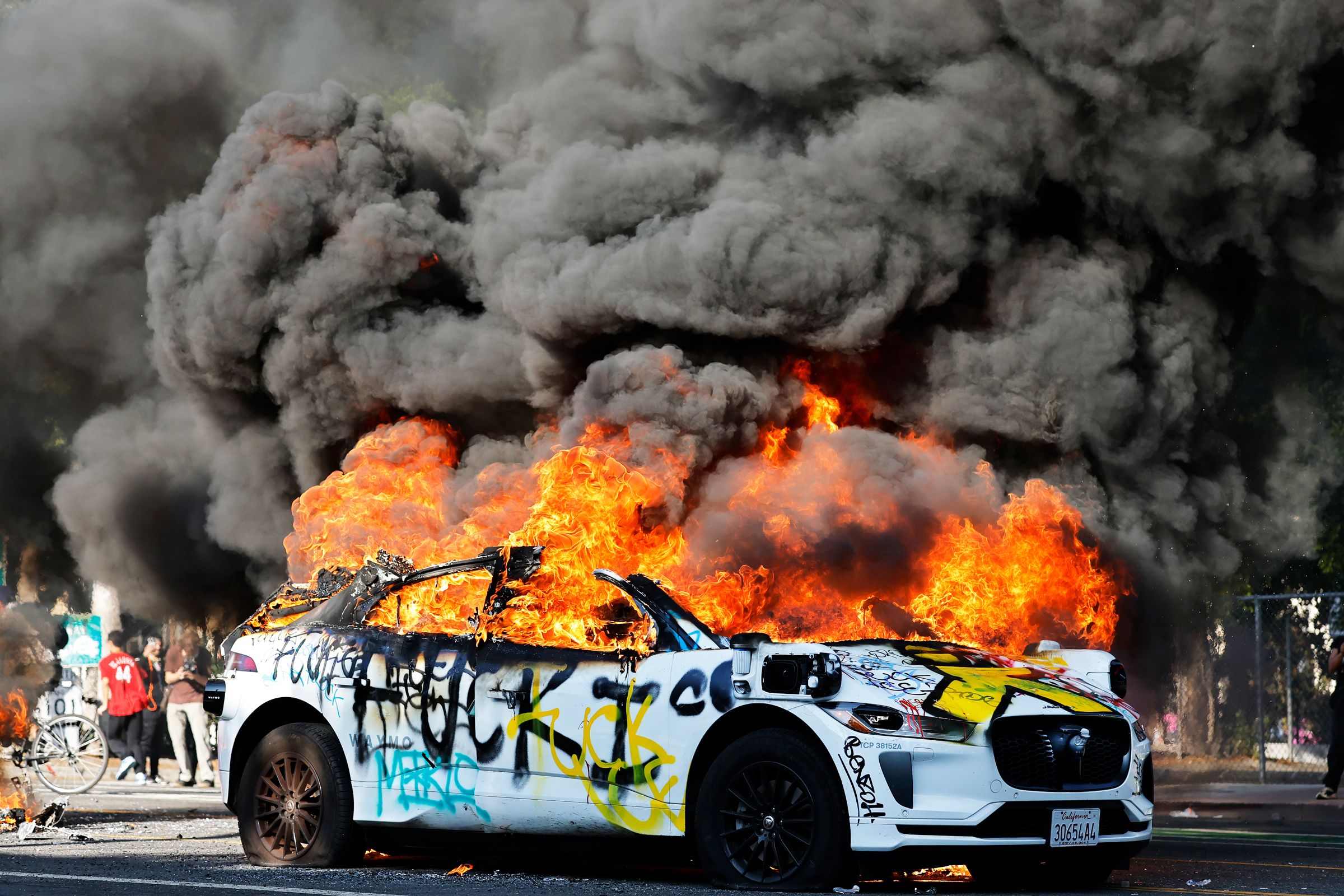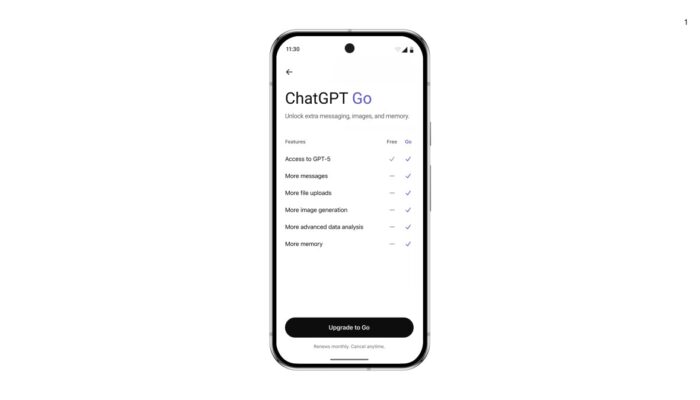Thousands of people across the United States poured into the streets this week to protest the Trump administration’s immigration policies, joining a nationwide wave of resistance that began in Los Angeles. One of the most widely shared images from the city, where federal authorities have sent almost 5,000 active-duty Marines and National Guard members, is of five Waymo robotaxis that were vandalized and set on fire. The incident has become one of the most recognizable symbols of the demonstrations so far, and prompted Waymo to temporarily shut off service in several parts of the city as well as in San Francisco on Monday.
The charred Waymo cars have also raised fresh questions about what kinds of technology authorities can use to surveil protestors and potentially collect evidence to make arrests. According to Waymo’s website, its latest driverless cars have 29 external cameras, providing “a simultaneous 360° view around the vehicle,” as well as an unknown number of internal ones.
Over the last several years, Waymo has repeatedly shared video footage with police after receiving formal legal requests. But it’s not clear how often the self-driving company, which is owned by Google’s parent organization Alphabet, complies with these demands. Unlike Google, Waymo doesn’t disclose the number of legal requests it receives nor how it responds to them. When police do obtain footage, they could also combine it with other technology—like facial recognition, or nonbiometric tools for finding and tracking people in video clips—to identify possible criminal suspects.
Waymo spokesperson Sandy Karp tells WIRED that the company’s general policy is to challenge data requests that are overly broad or lack sound legal basis, but it doesn’t disclose or comment on specific cases. Karp pointed to Waymo’s privacy policy, which acknowledges that the company may share user data to comply with laws and governmental requests. A separate support page for Waymo One, the dedicated app for its robotaxi service, notes that the company “may share certain data with law enforcement as needed to comply with legal requirements, enforce agreements, and protect the safety of you and others.”
It’s not clear how much, if any, of the video footage potentially captured by the burned Waymos in Los Angeles may have been destroyed along with the cars. Waymo doesn’t specify whether the data collected by its robotaxis is stored locally in the vehicle itself or externally in the cloud. The company previously told the Washington Post that “interior camera data” isn’t stored alongside the data from external cameras.
If any footage does still exist from the destroyed vehicles, Waymo doesn’t disclose how long it may remain available. Waymo’s website and privacy policy do not specify how long the company retains camera footage captured inside or outside its vehicles. For years, self-driving companies like Waymo retained large amounts of information collected by their cars for training purposes and to optimize the underlying technology. The company has generally been trending more recently toward deleting data sooner, WIRED previously reported, though it’s unclear if some types may be stored longer than others.
Waymo declined to answer questions from WIRED about how many cameras are inside its vehicles, exactly how long footage is retained, and whether the company has ever turned over footage to US federal law enforcement or a branch of the military. Karp did note, however, that the company’s engineering team sometimes uses information from sensors, including video footage and other data, to run simulations aimed at improving its technology. She says Waymo also puts limits on both who can access data and how long it’s retained.
Waymo’s robotaxi service is currently available in the Phoenix metro area and parts of San Francisco, Los Angeles, and Austin. In the company’s relatively short time operating in US cities, it’s shown a willingness to comply with requests for footage from law enforcement.
Officers working for Arizona’s Mesa Police Department and Chandler Police Departments have been requesting and using footage from Waymos for criminal investigations since 2016, or about as long as the vehicles have been in their towns, according to reporting from Phoenix’s ABC 15. Police told the news outlet in 2022 that they have used the footage for several cases, including an alleged road rage incident. (The individual pleaded guilty after being charged with disorderly conduct.)
In May 2022, two months after Waymo began limited robotaxi operations in San Francisco, Vice reported that a training document for San Francisco police explicitly told officers that “autonomous vehicles” have footage that could sometimes “help with investigative leads.”
As of 2023, Waymo had been issued at least nine search warrants in San Francisco and Arizona’s Maricopa County, its primary markets at the time, according to reporting from Bloomberg. One of the cases involved the murder of an Uber driver in 2021. While San Francisco police said they couldn’t identify a specific Waymo vehicle that was near the crime scene, an officer argued that there was “probable cause” Waymo vehicles were “driving around the area” and had footage of the victim, possible suspects, and the crime scene, according to a search warrant viewed by Bloomberg. Waymo complied and provided footage, but it ultimately did not lead to the arrest of the suspect, who was convicted of the murder in 2023.
Last year, WIRED reported that Waymo had sued two individuals for allegedly vandalizing its vehicles in San Francisco and had camera footage from the cars of the alleged incidents. (One of the cases is ongoing; the other was dismissed last month.)
Waymo’s video recording and data collection practices aren’t unique. All vehicles with self-driving capabilities rely on a combination of lidar, radar, and video data in order to operate. Cruise, the now defunct self-driving car venture run by General Motors, also reportedly gave camera footage to law enforcement upon request.
Private owners of camera-equipped vehicles can also voluntarily turn over camera footage to law enforcement. For example, police in Berkeley, CA have received at least two sets of footage from the owner of a Tesla Cybertruck who said their car was vandalized twice this year, according to documents obtained by WIRED via public record request.
Additional reporting by Paresh Dave.




